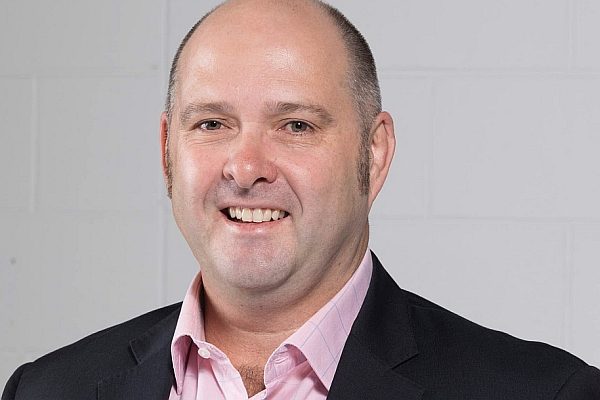Published on the 04/12/2018 | Written by Heather Wright

Data lakes, traceability and partnering key…
In a world overrun with data, Zespri’s Andrew Goodin admits that capturing the right information can still be a challenge. The world’s largest kiwifruit marketer, grower-owned Zespri sold 138.6 million trays of kiwifruit in 2017/18, with sales in 60 countries. And while collecting data is easy in some countries where, for example, the product is sold in punnets, other markets present challenges. It’s a challenge that Goodin, as Zespri International’s acting chief digital officer, is well acquainted with. His role, created a year ago (prior to that he was the global manager of information systems for the company, which he has been with for nearly 10 years), was created to provide ‘a more consumer focused approach to technology’. “Dan [Mathieson, Zespri chief executive] is looking for ways technology can more than just enable the business but be a mainstay of how Zespri can grow around the world and create that really, really deep connection between the consumer all the way through the value chains to the grower, which is something we see as incredibly important for Zespri,” Goodin says. Data forms a critical part of that equation. “If we can get more data and understanding from our consumers, we can look to tailor how we present or deliver kiwifruit to them. “Currently we’re a fresh business, but what about other opportunities? Could we provide fruit in a more convenient format to consume? If you look at what some companies are doing in North America leveraging data through loyalties or upsell around different options, is that giving them a bit more info around what they should do with kiwifruit?” Goodin says. “But the first thing is to really capture the data. That’s a key thing for us. It’s where we see the big opportunity right now,” he says. “We’re committed to learning more and understanding more about the consumer. “A lot of people talk about putting the consumer at the heart, but really it’s the information, if we can understand the consumer we can provide them with a great experience that better meets their needs, which is really putting them at the heart of what we do.” The company is also looking at improving traceability and providence. “If you think about what has happened in Australia [with the needles in strawberries] from the whole food safety component, traceability is massive. Goodin says both traceability and providence are becoming increasingly important, particularly for companies with a brand to protect. “It’s hard to build [a brand] and as we can see with the needle type challenge, it’s quite easy to tear down.” For Zespri, it’s not just a case of enabling consumers to trace their product back to an orchard. “It’s not just good enough to say it’s come from this orchard – you need to know what has been sprayed on it and what has gone into the sprays. “You have to go as far back as needed to ensure the consumer is safe and therefore your brand is safe and you’re managing your brand equity, brand value and protecting consumers so protecting the value of the product and services you sell and therefore the grower and shareholder value. “That’s where things are going.” Partnering up for success It was, Goodin says now, something of a bold move, and followed a rough period for the company, with the kiwifruit industry hit hard by PSA from 2010. “Sometimes you’ve got to be bold – not cavalier, but bold – and if you’re working with strong partners you can achieve great outcomes,” he says. Goodin is a strong believer in the value of partnerships. “One of the key lessons I’ve learned over my time at Zespri and other places is that, particularly in a modern business environment, it is pretty hard to do everything yourself.” He says collaboration with others is ‘hugely important’, but notes that some companies remain ‘afraid’ of sharing data or information. “But if we were to give each other data, we would each do something different with it. And it’s what you do with that information that creates the value, not necessarily the information itself. So partnering has been really important for Zespri and will be going forward.” The company uses the Azure data warehouse, connected with its SAP systems through data services. “Then across that, across the data lake, we are able to use whatever tools we like.” Currently those tools are a mix of SAP, including Business Objects, and Microsoft Power BI. However, with the increasing data push, Goodin says Zespri is also looking at building data science capability around Python. The move to cloud has provided Zespri with the ability to grow, quickly open offices around the world and be more agile. A recent hackfest – Zesfest – has also helped infuse Zespri’s culture with a more agile approach. The Zesfest, run with Datacom, was designed to demonstrate how much could be accomplished in a couple of days with the right level of focus and the right mindset, Goodin says. “Like a lot of other companies we’re moving towards an agile style approach, but how do we do it at scale and really well? Agile is not a cookie model. You can’t just say ‘Let’s go and implement what Spark has done at Zespri’, that won’t work. So how do we create our own agile? “The hackfest is a way of blending this with our culture and being able to create a Zespri agile approach that really adds value and allows us to accelerate the smart ideas.” As to the projects that came out of the hackfest, Goodin says at least one of the four has potential for commercialisation, with others making ‘massive’ improvements for people within Zespri. Augmenting humans He says one sales order process around tracking on a vessel has eight steps, four of which Zespri believes can be automated through RPA. “It’s not a removal of a person, but what it does do is save that person a lot of hours every week and allow them to do alternative work. “We saw it not as the removal of a person, but the augmentation that allows them to do their job more effectively, creating more consistency in the data, accuracy and then that person can cast their discerning – human – eye over it and we’re able to move forward.” He says RPA, in this case at least, can make a team member’s role better and create value through making sure data is accurate or a process is simplified. … Are buyers looking for AI features? Or is the reverse more true? It’s time for AI to go from low impact to big bang… Mercy Radiology’s $200k cash bonus from RPA… New research suggests the human touch might be the solution to the excesses of the big data deluge… Facial recognition at airports – is its beauty skin-deep, or ugly all the way to the bone?…
Zespri has been a long time SAP user. In fact the company was the first in the world to put SAP on the public cloud, when it moved to Microsoft’s Azure cloud services in 2014.
Zespri has recently been running trials around robotic process automation, an area Goodin believes could have significant benefits for Zespri – and other companies.FURTHER READING

The evolving role of AI in business technology

Stuff taking AI mainstream

Switched on CEO: Dr McCann builds a bionic business

Ethics and algorithms: Can machine learning ever be moral?

Qantas/Sydney international airport embrace biometrics



























